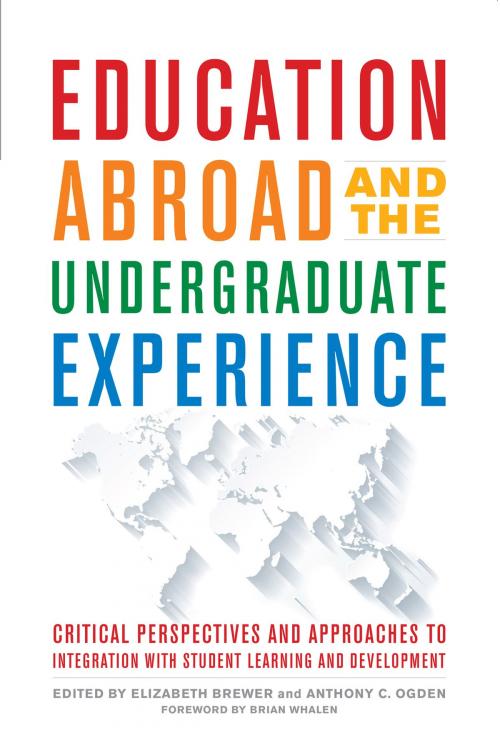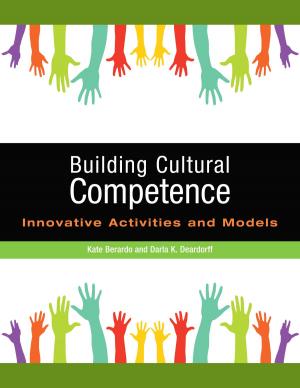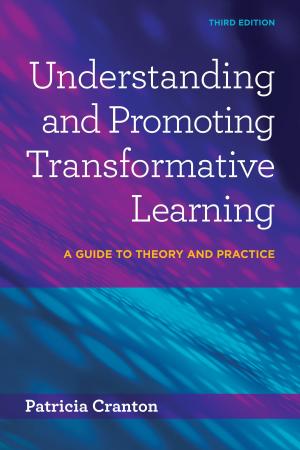Education Abroad and the Undergraduate Experience
Critical Perspectives and Approaches to Integration with Student Learning and Development
Nonfiction, Reference & Language, Education & Teaching, Higher Education| Author: | ISBN: | 9781620368299 | |
| Publisher: | Stylus Publishing | Publication: | May 30, 2019 |
| Imprint: | Stylus Publishing | Language: | English |
| Author: | |
| ISBN: | 9781620368299 |
| Publisher: | Stylus Publishing |
| Publication: | May 30, 2019 |
| Imprint: | Stylus Publishing |
| Language: | English |
Co-published with NAFSA.
This volume focuses on two questions. First, how can education abroad be embedded into undergraduate education so that students experience it as an integral component of their education and something they help shape, rather than as time away from their education and as a commodity to be consumed? Second, how can colleges and universities maximize the educational value of education abroad by forging stronger connections between it and other undergraduate experiences? The volume argues that learning abroad be positioned within the work of the larger institution and students’ overall education.
Organized within three sections, this volume makes the case that learning abroad must be positioned within the work of the larger institution and students’ overall education. In doing so, it questions many current assumptions and stimulates thinking about the power of an integrative approach to education abroad to lead to lasting educative value. An integrative approach requires that students be afforded multiple opportunities and ongoing support to draw connections with their learning abroad with other dimensions of their undergraduate education.
Chapters cover topics such as the additive value of integrating multiple HIPs with education abroad to span disciplinary boundaries and promote an array of soft or operational skills; the importance of maintaining the disruptive quality of the encounter with the foreign to enrich study at home; issues of commodification and reciprocity; increasing access to study abroad to community college--particularly adult--populations; facilitating students’ social and intellectual development, identity formation, and reflective practice; rethinking orientation programming to emphasize the continuity of learning pre-, during- and post-education abroad; asking fundamental questions about the purpose of education abroad to rethink assessment and its purposes; the faculty role in the internationalization of the curriculum; and developing more intentional relationships with in-field partners and international educational organizations to more effectively connect leaning abroad with other dimensions of undergraduate education.
For everyone involved in international education – whether SIOs, faculty, department chairs or deans – the critical questions and new perspectives offered here will inform and shape the growing movement to integrate education abroad with the overall undergraduate experience.
Co-published with NAFSA.
This volume focuses on two questions. First, how can education abroad be embedded into undergraduate education so that students experience it as an integral component of their education and something they help shape, rather than as time away from their education and as a commodity to be consumed? Second, how can colleges and universities maximize the educational value of education abroad by forging stronger connections between it and other undergraduate experiences? The volume argues that learning abroad be positioned within the work of the larger institution and students’ overall education.
Organized within three sections, this volume makes the case that learning abroad must be positioned within the work of the larger institution and students’ overall education. In doing so, it questions many current assumptions and stimulates thinking about the power of an integrative approach to education abroad to lead to lasting educative value. An integrative approach requires that students be afforded multiple opportunities and ongoing support to draw connections with their learning abroad with other dimensions of their undergraduate education.
Chapters cover topics such as the additive value of integrating multiple HIPs with education abroad to span disciplinary boundaries and promote an array of soft or operational skills; the importance of maintaining the disruptive quality of the encounter with the foreign to enrich study at home; issues of commodification and reciprocity; increasing access to study abroad to community college--particularly adult--populations; facilitating students’ social and intellectual development, identity formation, and reflective practice; rethinking orientation programming to emphasize the continuity of learning pre-, during- and post-education abroad; asking fundamental questions about the purpose of education abroad to rethink assessment and its purposes; the faculty role in the internationalization of the curriculum; and developing more intentional relationships with in-field partners and international educational organizations to more effectively connect leaning abroad with other dimensions of undergraduate education.
For everyone involved in international education – whether SIOs, faculty, department chairs or deans – the critical questions and new perspectives offered here will inform and shape the growing movement to integrate education abroad with the overall undergraduate experience.















